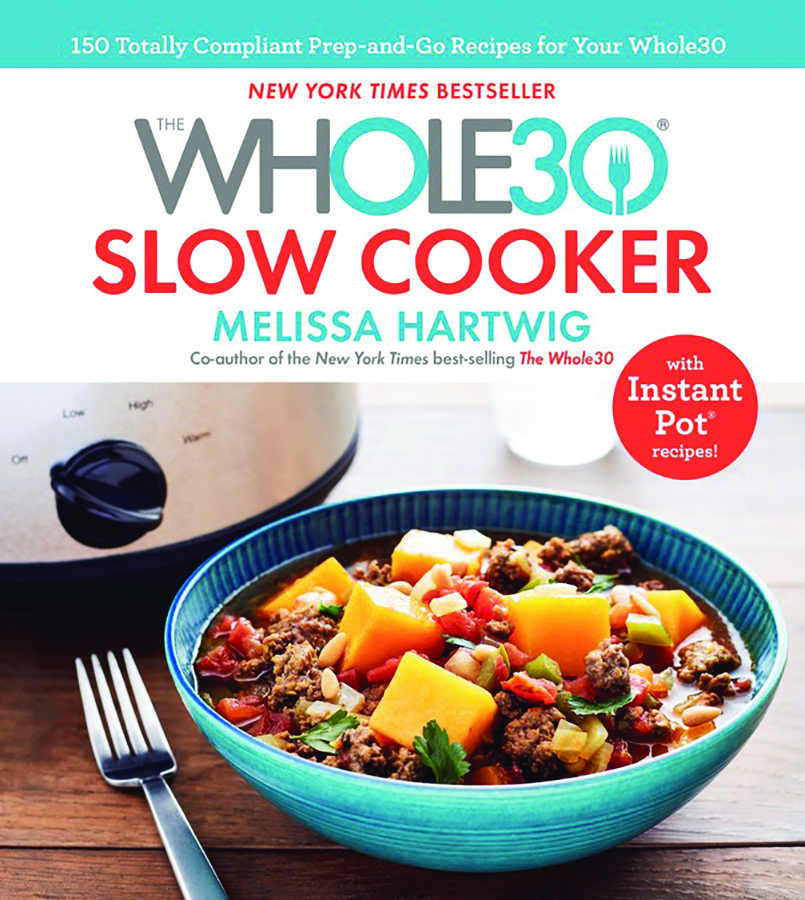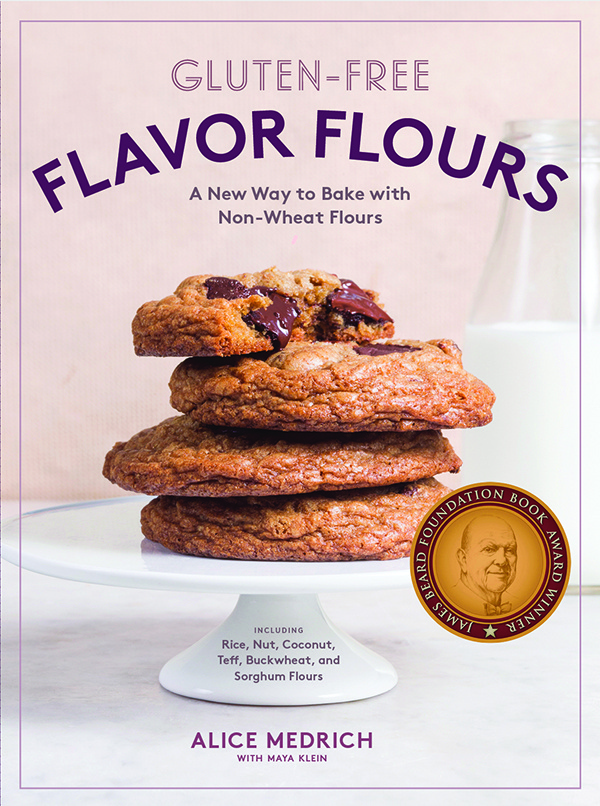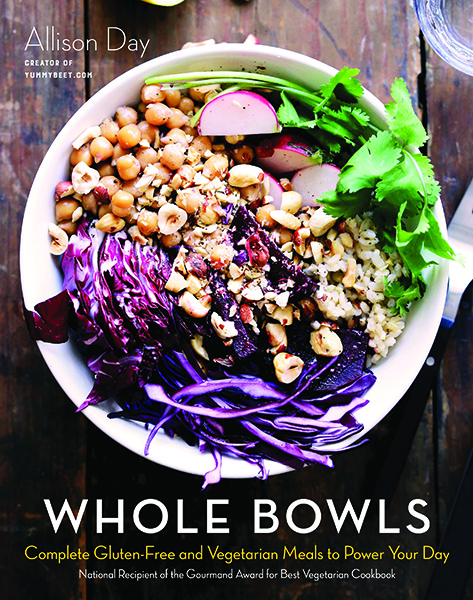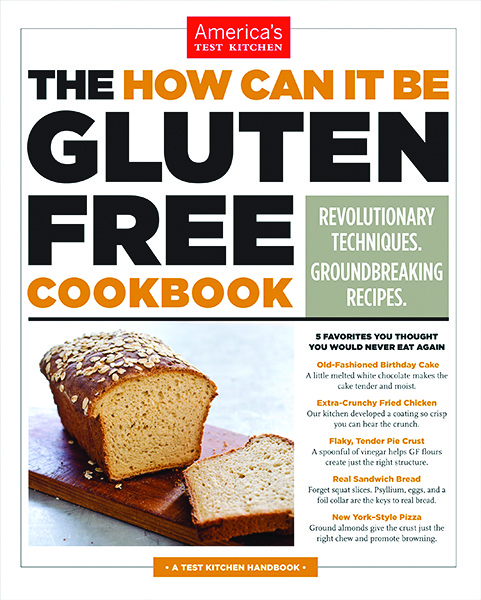As “simple” as it is in theory, though, going GF can be a daunting prospect. There’s plenty of misinformation that consumers have to wade through, not to mention the loss of a multitude of comfort foods and the difficulties of fully avoiding gluten, which “lurks” in many products that consumers might not suspect—everything from lunch meat to lipstick. Here, how to help GF dieters restore wellbeing and bring bakers back into the kitchen.
Bakers Rejoice!
Many who go gluten-free lament the loss of baked goods—but there’s no need to give up buns and breads and other fresh-from-the-oven deliciousness. That said, GF baking takes some experimentation. Rice flour is said to be closest replacement for wheat in baked goods. Steven Gumeny suggests combining rice flour and rice starch to help maintain the adequate volume, crumb structure, softness, and dough strength usually seen in gluten-containing foods. “This approach,” he says, “can eliminate the need for complex combinations of multiple starch or flour sources.” America’s Test Kitchen, too, found that a blend of rice flours and potato starch mimicked wheat flour the best and most deliciously (16). Moreover, a kitchen scale is worth the price. Some baking pros contend that, when measuring flour, one should never pack it down; others say packing is the only way to get reliably consistent measurements. The best option, therefore, is weighing the flours, and the best advice is that “close enough” isn’t good enough.
Bread Making Tips
• Whisk flours before using them (17). • Bake breads at lower temperatures for longer (17). • Use a baking thermometer to check that bread is 200 degrees F or higher in the center (17). • Eggs help breads rise and become airier (18). • Stand mixers make smoother dough (18).
Keys for Consumers Going GF Know the cause before diving in People dealing with abdominal pain, headaches, rashes, fatigue, low moods or anxiety—among other symptoms—may have heard that giving up gluten can bring relief (2). But before going GF, consumers should see a healthcare provider to see if gluten is playing a role in their symptoms. Shelley Case, R.D., author of Gluten Free: The Definitive Resource Guide, told CNN that starting a GF diet prior to testing could result in a false negative, making it crucial to get tested first (3). Establishing gluten as the culprit could be vital to a person’s willingness to stick to the diet; ruling it out could help a person figure out what is really causing their symptoms so they get true relief.Does Glyphosate Cause Gluten Sensitivity?
This theory is gaining steam online, and consumers who have read about it may come into your store with questions. The theory stems from a paper titled Glyphosate, pathways to modern diseases II: Celiac sprue and gluten intolerance by Anthony Samsel and Stephanie Seneff (12). But not everyone is on board. Sarah Ballantyne, Ph.D., who blogs at The Paleo Mom, points out that, “a causative role for glyphosate in celiac disease is iffy at best. The paper in question compiles a number of potential arguments that may seem compelling at first glance, but generally don’t hold up to closer examination” (13). This doesn’t mean that glyphosate is healthy, Dr. Ballantyne says—just that there is no evidence connecting it to celiac. William Davis, M.D., author of Wheat Belly, also expresses doubt on his blog: If glyphosate caused gluten intolerance or celiac, he says, “All we would have to do is consume organic wheat. If you are grain-free, give that a try: you will learn very quickly that the diarrhea, bloating, abdominal discomfort, high blood sugars, joint pain, emotional effects, suicidal thoughts, and other re-exposure phenomena are still provokable in the absence of glyphosate” (14).
Another theory points to microbial transglutaminase (MTg), according to a study published in December 2018. MTg is a bacterial enzyme heavily used in processed food. The authors themselves said in the study that “we are dealing with an associative correlation, and no causality was determined”—so, too, is a theory without supportive evidence (15).
Sort through GF-free confusion When gluten is the cause of symptoms and wheat does need to come off the menu, consumers will often Google to see what they should eat instead. Rice is one of the staple foods that can take its place, but when consumers plug the words “rice” and “gluten-free” into their search engine to get more information, they’ll be met with some disheartening headlines alerting them that rice contains arsenic and claiming that it’s just empty calories. That can leave people feeling even more exasperated, wondering what is safe and healthy to eat. The good news is that rice lovers needn’t steer clear. While the Food and Drug Administration (FDA) does report that rice absorbs more arsenic from soil and water than other foods, whether the rice is organic or not (4), the agency’s research found that cooking rice in excess water—at a ratio of 6:1—can reduce the arsenic by 43% for polished rice, 50% for brown rice, and 61% for parboiled rice (4).It’s important to also note, though, that this 6:1 rice-cooking method also reduces the amount of vitamins in the rice, which leads to the other common rice concern: Lack of nutritional value. On this front, Steven Gumeny, regional products manager of rice ingredients and functional proteins for Beneo, points out that rice contains a good amount of non-gluten proteins and has a “very interesting amino acid profile.”
GF dieters also may be looking to up their intake of oats and corn, which are naturally gluten-free. They should be made aware of the fact that oats or corn are sometimes processed in the same facilities as wheat and barley, and creamed corn can be made with wheat flour, making them ripe for cross-contamination (5, 6). Those on a GF diet should ensure that their oats are certified gluten-free. If a product isn’t certified GF, customers should check to see if products were processed in a facility with wheat—manufacturers are required to declare that, and those products should be avoided.
Be on alert for GF pitfalls For those with a gluten sensitivity, a GF diet is best—and, for celiac patients, it is vital. But simply giving up gluten isn’t a magic bullet for total health. In fact, some people end up gaining weight after going gluten free, according to Sheila Crowe, M.D., spokesperson for the American Gastroenterological Association (7). This can be due to the fact that some GF packaged goods are just as processed as gluten-containing items, and some contain more fats and sugars in order to make up for the absence of gluten (7). Plus, some GF products aren’t enriched with vitamins in the same ways as wheat products, leading to nutrient shortfalls (8). In fact, a review of 21 studies published in Clinical Nutrition determined that individuals following a GF diet often fail to consume adequate amounts of vitamin D, vitamin B12, folate, iron, magnesium, calcium and zinc (8). The review found that the risk was greater if gluten-containing foods were replaced with GF alternatives instead of with whole grains, fruits and vegetables.
In addition to encouraging consumers to enjoy more of the fresh produce in your store, dietary supplements are a convenient way to bridge this nutritional gap. There are other options as well, including opting for healthier grains. A few that consumers can consider: Pamela’s has a line of grain-free flours, including cassava flour and tiger nut flour, which, the company says, both replace wheat flour on a one-to-one ratio. Enjoy Life sells an all-purpose flour made with millet, rice, teff, and buckwheat. Bob’s Red Mill offers amaranth grain, teff, and millet, for those who would prefer to eat their grains unground. Udi’s makes their Sprouted Grains Artisan Bread with brown rice flour, sorghum flour, millet flour, and amaranth flour. Glutino adds iron, niacin, thiamine, and riboflavin to their Multigrain English Muffins. PINES makes a wheatgrass supplement that is certified GF, and chock full of the nutrients that customers would also get from vegetables.
Sidestep Sneaky Sources Depending on how broad a range of products you sell, keeping gluten away from GF customers can get difficult. Gluten can exist in mashed potatoes, in lunch meats, in vegan meat substitutes—as well as in lipstick, baby powder, sunscreen, and toothpaste (9). Given that these are not food products, new GF dieters might not think to check them, and they may noy be labeled as containing gluten. There’s a great big favor you can do for your GF customers: point to safe GF alternatives. Put shelf talkers next to GF products, and put your GF products in one place so that GF customers don’t have to hunt for them. Separate the wheat flour and sugar in your baking aisle so GF customers don't have to worry about cross-contamination. Put shelf talkers that announce “Gluten free? See our GF cosmetics section in aisle 8!” When figuring out your window displays, consider adding a sign saying: “Gluten free? Ask us about gluten in cosmetics!” Save your customers the anxiety of going GF but not fully recovering.
Catering to Gluten-Free Customers Little things go a long way. Since gluten hides—in soy sauce, soup, scrambled eggs, herbal teas—pointing out the products that are gluten-free and making them easy to find will add major value. Group the vitamins GF dieters miss out on into one GF wellness display. Call out enriched food items, or whole foods that contain those nutrients. If you have a hot bar or a deli counter, remember that a gluten free sandwich toasted in the same toaster as wheat bread is no longer gluten-free. A crouton crumb won’t hurt a fad dieter, but it can be enough to trigger an immune response in a celiac patient. Guaranteeing no cross-contamination in your store is key to keeping your GF customers safe, healthy and happy. WF
Good Health Reads: Top Selling Gluten-Free Cookbooks
 The Whole30 Slow Cooker: 150 Totally Compliant Prep-and-Go Recipes for Your Whole30 with Instant Pot Recipes (Houghton Mifflin Harcourt, 2018) by Melissa Hartwig
The Whole30 Slow Cooker: 150 Totally Compliant Prep-and-Go Recipes for Your Whole30 with Instant Pot Recipes (Houghton Mifflin Harcourt, 2018) by Melissa HartwigWith 74 customer reviews, the book holds a rating of 4 out of 5 stars. Happy reviewers adored the variety of recipes, and noted that they were delicious without any tweaking. This book offers great examples of one of the many ways a gluten-free diet can be delicious.
 Flavor Flours: A New Way to Bake with Teff, Buckwheat, Sorghum, Other Whole & Ancient Grains, Nuts & Non-Wheat Flours (Artisan Books, 2014) by Alice Medrich
Flavor Flours: A New Way to Bake with Teff, Buckwheat, Sorghum, Other Whole & Ancient Grains, Nuts & Non-Wheat Flours (Artisan Books, 2014) by Alice MedrichThis 4.5 star cookbook, reviews say, takes gluten-free recipes in a gluten-free direction, preferring the flavors and textures of gluten-free flours to flour-and-starch mixes that imitate gluten.
 Whole Bowls: Complete Gluten-Free and Vegetarian Meals to Power Your Day (Skyhorse Publishing, 2016) by Allison Day
Whole Bowls: Complete Gluten-Free and Vegetarian Meals to Power Your Day (Skyhorse Publishing, 2016) by Allison DayThis cookbook has a rating of 4.5 stars. One reviewer said, “This cookbook could change your life (in a good way).” According to reviewers, it is a great book for those who like vegetables and want new ways of eating them. Another plus: These are everyday, workday meals.
 The How Can It Be Gluten Free Cookbook: Revolutionary Techniques. Groundbreaking Recipes. (America’s Test Kitchen, 2014) by America’s Test Kitchen
The How Can It Be Gluten Free Cookbook: Revolutionary Techniques. Groundbreaking Recipes. (America’s Test Kitchen, 2014) by America’s Test KitchenWith a whopping 1,160 reviews and 4.7 stars, this book is a boon to those who love to cook and want recipes that taste like they contain gluten. With a full explanation of the science behind the recipes, this book can be extrapolated to other dishes, too.References:
- “Celiac Disease, Non-Celiac Gluten Sensitivity or Wheat Allergy: What Is the Difference?” Gluten.org. Accessed 12/26/2018. https://gluten.org/resources/getting-started/celiac-disease-non-celiac-sensitivity-or-wheat-allergy-what-is-the-difference/
- Mayo Clinic Staff, “Celiac Disease,” org. Posted 3/6/2018. Accessed 12/26/2018. https://www.mayoclinic.org/diseases-conditions/celiac-disease/symptoms-causes/syc-20352220
- Lisa Drayer, “Gluten-free diet not healthy for everyone,” com. Posted 12/13/2018. Accessed 12/26/2018. https://www.cnn.com/2018/12/13/health/gluten-free-good-food-drayer/index.html
- “Questions and Answers: Arsenic in Rice and Rice Products.” gov. Accessed 12/26/2018. https://www.fda.gov/Food/FoodborneIllnessContaminants/Metals/ucm319948.htm
- Taylor Jones, “Are Oats and Oatmeal Gluten-Free? The Surprising Truth,” com. Posted 4/28/2016. Accessed 12/26/2018. https://www.healthline.com/nutrition/gluten-in-oats
- Jane Anderson, “How Safe is Corn When You’re Gluten-Free?” com. Posted 11/14/2018. Accessed 12/26/2018. https://www.verywellfit.com/is-corn-gluten-free-562845
- Sarah Klein and Sheila Crowe, “9 Things You Should Know Before Going Gluten-Free,” org. Posted 2/12/2014. Accessed 12/26/2018. https://celiac.org/about-the-foundation/featured-news/2014/02/9-things-you-should-know-before-going-gluten-free/
- Sharyn Reinhold, “Risks of Nutrient Deficiencies in a Gluten-Free Diet,” com. Posted 10/25/2017. Accessed 12/26/2018. https://www.integrativepro.com/Resources/Integrative-Blog/2017/Nutrient-Deficiencies-Gluten-Free-Diet
- Amy Myers, “10 Unexpected Places Gluten Lurks,” com. Accessed 12/26/18. https://www.mindbodygreen.com/0-10248/10-unexpected-places-gluten-lurks.html
- Molina-Infante et al., “Systematic review: noncoeliac gluten sensitivity,” Alimentary Pharmacology and Therapeutics, 41(9), 807-820(2015). https://onlinelibrary.wiley.com/doi/full/10.1111/apt.13155
- Niall McCarthy, “The Number of Americans Going Gluten-Free Has Tripled Since 2009,” Forbes. Posted 1/17/2017. Accessed 12/26/2018. https://www.forbes.com/sites/niallmccarthy/2017/01/17/the-number-of-americans-going-gluten-free-has-tripled-since-2009-infographic/#46f6c87532f2
- Anthony Samsel and Stephanie Seneff, “Glyphosate, pathways to modern diseases II: Celiac sprue and gluten intolerance,” Interdisciplinary Toxicology, 6(4), 159-184(2013). https://www.ncbi.nlm.nih.gov/pmc/articles/PMC3945755/
- Sarah Ballantyne, “Glyphosate (Roundup) as a Cause of Celiac Disease,” com. Posted 9/18/2017. Accessed 12/26/2018. https://www.thepaleomom.com/glyphosate-roundup-cause-celiac-disease/
- William Davis, “Is glyphosate the REAL problem in wheat?” com. Posted 10/20/2018. Accessed 12/26/2018. https://www.wheatbellyblog.com/2018/10/is-glyphosate-the-real-problem-in-wheat/
- Matthias Torsten and Lerner Aaron, “Microbial Transglutaminase Is Immunogenic and Potentially Pathogenic in Pediatric Celiac Disease,” Frontiers in Pediatrics, 12/11/18. https://www.frontiersin.org/articles/10.3389/fped.2018.00389/full
- “Solving Baking Problems in the Gluten-Free Kitchen,” com. Accessed 12/26/2018. https://www.americastestkitchen.com/guides/gluten-free/troubleshooting-gluten-free-baked-goods
- Shelley Case, “Gluten-Free Holiday Baking Tips,” com. Posted 12/04/18. Accessed 12/26/18. https://shelleycase.com/gluten-free-holiday-baking-tips/
- Jeff Hertzberg, “Dense or gummy interior, or inadequate rising in my gluten-free breads. What am I doing wrong?” com. Posted 10/17/2014. Accessed 12/26/2018. https://artisanbreadinfive.com/2014/10/17/dense-or-gummy-interior-or-inadequate-rising-what-am-i-doing-wrong/










